The material that a rope is made from is a major factor in the tasks it should be used for, different materials have certain characteristics that will make them ideal or unsuitable for a variety of applications found on a vessel.
Nylon
Nylon ropes are stretchy so they are ideal for uses that may shock load the rope. Typically nylon ropes are used for mooring, anchoring and towing, in these situations the rope will stretch and absorb the forces applied to it rather than snapping.
When mooring, the ropes may be loaded by the force of the wind or tide, other vessels mooring alongside or by the tide falling and the ropes being stretched to accommodate the lower water  level.
level.
For anchoring, multi-plat or 8-plat nylon rope is ideal, it is very hard wearing and in addition to the stretch of the nylon, the construction of the rope also allows for some "give" when heavily stressed.
Polyester or Terylene
Terylene is a brand name for polyester rope. The special quality of polyester ropes is that they do not give under load. This makes them ideal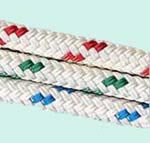 for running rigging, the halyards and sheets that control the sails.
for running rigging, the halyards and sheets that control the sails.
If these ropes stretched under load the sails would never stay trimmed correctly.
The braided construction of many polyester ropes used on yachts makes for more comfortable handling and easier use when running the rope around winches.
Polypropylene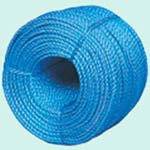
Polypropylene ropes float, which makes them ideal for safety uses, throwing lines, ropes on life rings and life buoys etc.
Cheap polypropylene rope can be difficult to handle as it can become stiff if left in the same position of a long period of time.
Floating ropes are very useful in some situations, however a rope on the surface is always a danger to the propeller, so particular care should be taken to avoid fouling the prop when using polypropylene.
Kevlar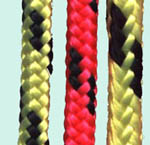
Kevlar ropes are fairly rare on cruising boats as the material is quite expensive compared to the other options. It is mainly found on racing yachts as it is very strong for its weight, so it is ideal for situations that are weight sensitive. It is also very stable, so is often used for halyards where the ability to apply constant tension to the sail is important.
Kevlar is very tough and can be difficult to cut or to seal, to seal the ends you may need to use those end seals that shrink when heated or dip them in sealing solution.
Rope selection
In practice, you will probably go to a chandlers and say what the rope is required for and they will recommend the correct material for the job, so in this case it is easy to ensure you are using the correct equipment. When it is harder is when you use a rope already on the vessel for an unusual task.
A few years ago I had to tow a yacht that had lost their rudder in winds of about 50 knots, the seas were very steep and the towed vessel was swinging through 180° as they kept accelerating down the waves then spinning round (just to make things interesting our engine had failed!). At first the only rope I could get to them was made of polyester, the result was that when the full load of the boat came on the rope, it would snap and we would have to pass the line again. Eventually I managed to find enough nylon rope that we could use that, as soon as we started to tow with this rope there was far less stress on both boats and the line did not snap again.
In this sort of situation the ideal rope to use would be the kedge anchor warp, as this should be plenty long enough and made of nylon.
Because we understood what was happening we were able to find a solution, if we had not understood the properties of the ropes we may not have realised there were better materials to use.
There are many other materials used in rope construction.
The use of mooring cleats
There is normally a correct end to put a mooring line around first when attaching the rope to a cleat, the guide is that the rope should go to the furthest end of the cleat. When this is done there should be a slight gap between the rope and the cleat, this will leave space for the rope when it is wound round the cleat.
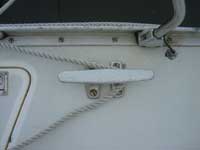
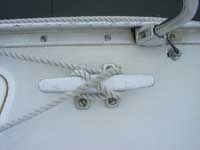
If this is not done there is a risk that later turns may be trapped against the cleat by the loaded rope and may not be able to be released easily. After the initial first complete turn the rope should be wound round in two complete figure 8s, if the last turn is wound round the outside of everything once this will normally hold the rope in place. You can describe this as "OXXOs".
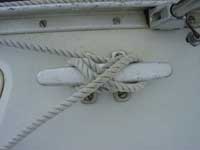
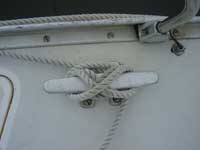
If you choose to put a locking turn on the cleat this should only be done after the figure 8s, and it should follow the lay of the ropes below it as shown in the picture on the left below.
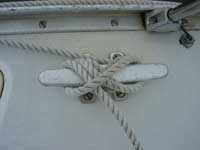
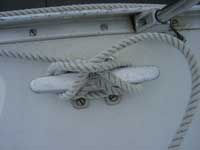
Sailtrain.co.uk is free to use, but if you feel you would like to contribute to the running and development costs you can donate via Paypal:
Additional Resources:

